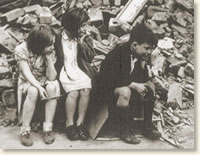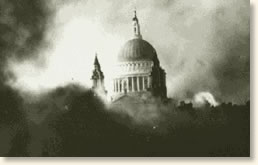Hey there, history buffs! This will be my first official post back in my usual home base, and I'm coming at you live from the Gatineau hills once again. I was quite sad to have to vacate my post at the museum, but of course all good things must come to an end, and my fourth year at university will be over before we know it! In honour of this occasion, I decided to more directly cover a topic we've briefly discussed a few times before, with a local connection, of course.
During the early part of the First World War, all elements of the German presence in Canada experienced a major backlash. Public schools removed German language courses from the curricula, and some orchestras refused to play German music. When the Lusitania, a civilian ship, was sunk in 1915 with hundreds of civilian deaths, the popular sentiment officially became that Canada was fighting a singularly noble cause against a nation of barbarians. Nasty riots began to explode in cities like Victoria, Montreal, and Winnipeg, with German-owned shops and businesses being targeted.
While things generally weren't as violent in our own neck of the woods during that time, all things German did receive a harsher treatment. I recently came across a story which highlights this point and sheds some light on the power of popular opinion in wartime.
 |
| Thomas Brothers, Limited St. Thomas factory ca. 1908 |
When the Thomas family emigrated from Germany to settle in Rodney, five of their sons established a successful lumber company on the west side of Furnival Road, south of the railroad tracks. Then, in 1903, the business was moved to St. Thomas, east of Wilson Avenue between Chester and Elm Streets. The brothers also built a number of houses along Chester Street to house factory workers.The 1903 catalog advertises an array of products: pails, washtubs, keelers and refrigerator drips, washbasins, handy dishes, milk pans, barrel covers, bread trays, ice water jars, butter tubs and covers, spittoons, chamber pails (for hospitals and asylums), slop jars, bread and butter bowls, florists' vases, and flower pot saucers. The company used wood fibre to produce their line, which they marketed as the Lily Brand. In addition, the factory was referred to as being a broom factory, and the Backus-Page House Museum has one of their washing machines. The brothers really did manufacture everything but the kitchen sink!
During the advent of the First World War, however, the company was boycotted due to the brothers' German heritage, forcing the company to close. Ironically, the factory complex was briefly used in 1916 as living quarters for members of the 91st Battalion, and the Battalion also maintained a recruiting office there. Unfortunately, the brothers were unable to recover and resume business after the war was over. Between ca. 1917 and 1923, the factory complex was rented to the Thomas Edison Co. for use as a phonograph company. After that, it stood empty until the 1950s when it was re-purposed for use as the Victor Gasket Co.
The Thomas Brothers' experience was troubling and unfortunate, but not nearly as devastating for them as it could have been. Anti-German propaganda, stories of German atrocities abroad, and the fear of saboteurs drove many Canadians to expect protection from their government. This came in the form of incarcerating some 8,579 of those"Enemy Aliens" behind barbed wire and forcing tens of thousands more to register with authorities and abide by strict rules for the duration of the war.
The Thomas Brothers story is just one of many to come of that period in our history, and the discourse regarding these issues remains heated to this day. Many thanks to the Canadian War Museum and Elgin County Archives for the content this week! If you want to view the Thomas Bros. catalog, here's the link: http://inmagic.elgin-county.on.ca/ElginImages/archives/ImagesArchive/pdfs/ECVF_B63_F24.pdf
Thanks for reading,
Delany (@DLeitchHistory on Twitter)












































